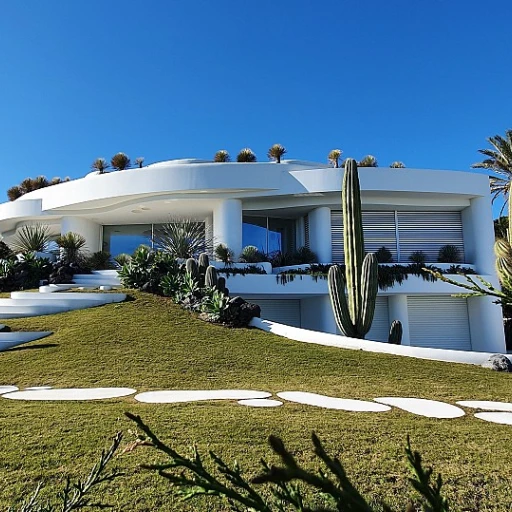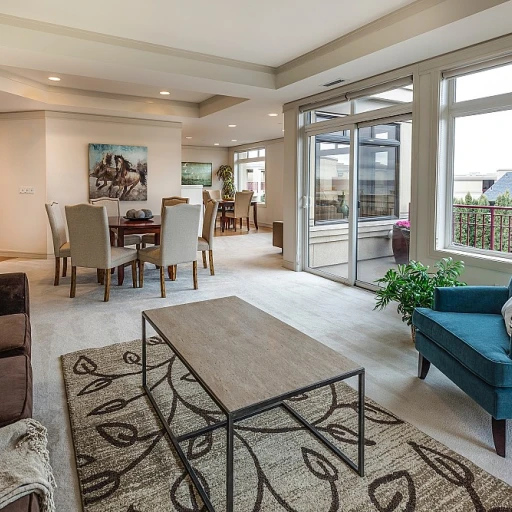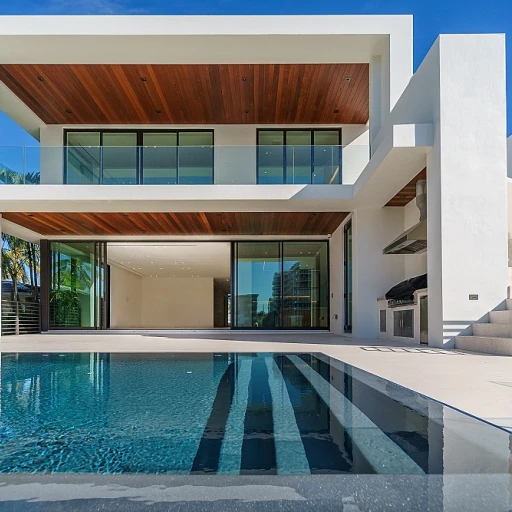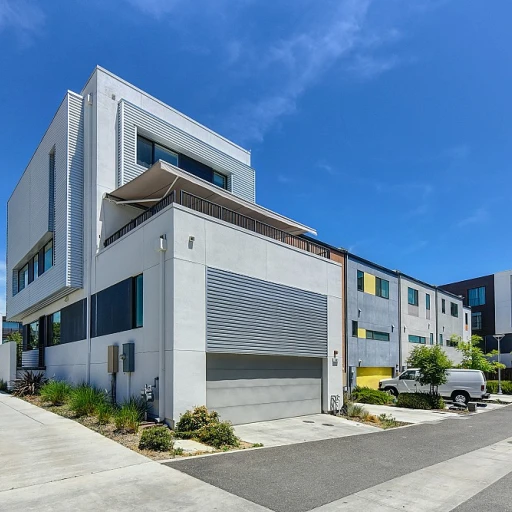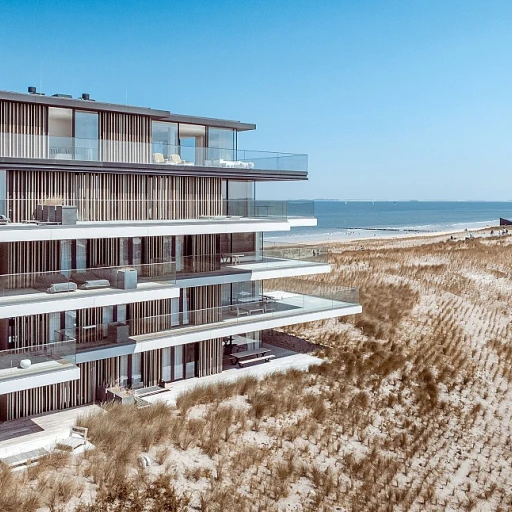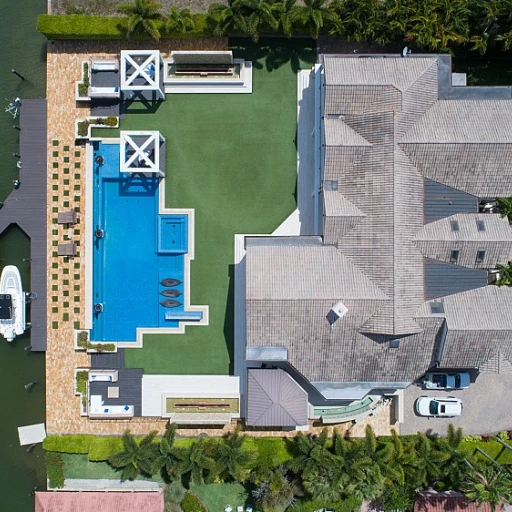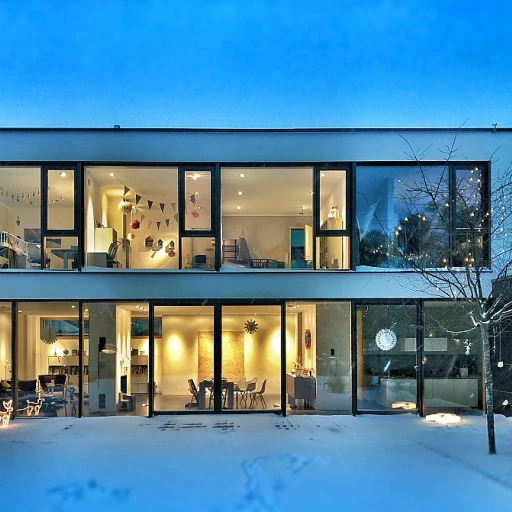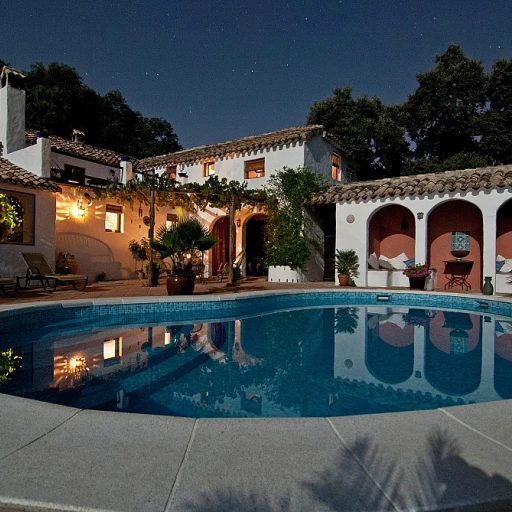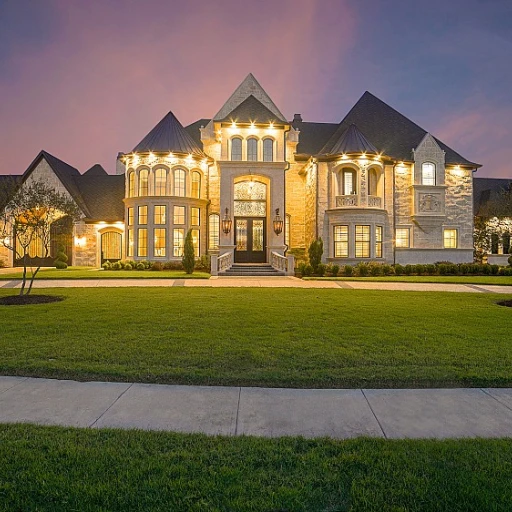
L'Impact des Styles Architecturaux sur la Valeur des Biens Immobiliers de Luxe
Defining the Value Crafted by Architectural Styles in Luxury Real Estate
In the exclusive realm of luxury real estate, architectural style is not merely a blueprint; it’s the essence of a property’s character that can significantly influence its market value. Aesthetics intersect with functionality, where every arch and angle can play a pivotal role in a property's appraisal. Buyers often view estates as extensions of their identities, seeking homes that reflect their unique tastes and lifestyles while considering the potential for value appreciation. According to a report by Knight Frank, traditional architectural styles in high-end markets can result in a premium of up to 30%, as they exemplify a sense of established elegance and permanence.
Renowned for their grandeur, estates showcasing classical architecture are often considered secure investments due to their timeless appeal. The curb appeal of venerable styles such as Georgian, Victorian, or French Chateau carries an intrinsic value that resonates with a segment of high-net-worth individuals. As the adage goes, 'They aren't making any more of it,' this sentiment rings particularly true with classical architecture, thereby reinforcing its scarcity and desirability in the market.
Assessing the Premium of Historical Significance and Artisanal Craftsmanship
Statistical evidence suggests that properties with historical provenance or bespoke artisanal craftsmanship command higher prices. For example, research from Historic England indicates that listed buildings – those recognized for their historical or architectural importance - can attract a premium of up to 20%. The integration of modern amenities within these estates, a practice known as 'sensitive modernization,' can further enhance value by marrying the allure of the past with the conveniences of present-day living.
Exclusive estate owners, understanding that each architectural decision can either bolster or diminish the value of their property, must weigh the potential returns of restoration and maintenance of classical aesthetics. The commitment to preserving distinct architectural elements can translate into substantial market benefits. Savvy investors are aware that the narrative of a property, including its design heritage and craftsmanship, can be monetized when marketed strategically to the right audience.
Le Charme Éternel des Classiques Architecturaux: Un Choix d'Investissement Stratégique?
The Investment Appeal of Time-Honored Architectural Classics
When it comes to the exclusive estate market, the appeal of classic architecture is undeniable. According to a survey by Knight Frank, properties with traditional architectural styles tend to retain their value over time. Such estates are often seen as a safe harbor for investors, especially in the volatile nature of today’s economy. In the world of luxury real estate, classic architectural styles — be it Georgian, Victorian, or Classical Revival — are regarded as enduring symbols of wealth and taste. Statistics show that a well-maintained classic estate can attract premium pricing, sometimes exceeding contemporary counterparts by as much as 35%.
The Tangible Benefits of Investing in Classical Architecture
- Heritage Prestige: Owning a classic estate is akin to owning a piece of history, offering cultural cachet that is immensely attractive to certain high-net-worth individuals.
- Resilience of Value: Real estate experts note that classic estates often witness less fluctuation in value during economic downturns, due to their perennial appeal.
- Exclusivity Factor: The rare nature of these architectural treasures amplifies their exclusivity, often translating to a stronger demand and higher market value.
Renowned architect Frank Lloyd Wright once said, "A building should appear to grow easily from its site and be shaped to harmonize with its surroundings if nature is manifest there." This philosophy underscores the inherent beauty of classic estates that seamlessly blend with their environment, a quality that is immensely appealing to luxury real estate buyers.
Strategic Considerations for Efficacious Investment in Classic Estates
For the exclusive estate owner eyeing classical architecture, understanding market dynamics is crucial. For example, the Sotheby's International Realty Luxury Lifestyle Report highlights that buyers of high-end properties are looking for authenticity and pedigree in their investments. As such, an estate’s architectural integrity and provenance are key factors in its valuation. The allure of classical charms in exclusive estates can be a substantial draw for an affluent demographic seeking more than just a home, but a legacy.
Modernité et Minimalisme: La Préférence des Nouvelles Générations d'Acheteurs
Deciphering the Attraction to Modern and Minimalist Designs
As the exclusive estate market flourishes, a striking trend has emerged among affluent millennials and Gen Z buyers: an unequivocal preference for modern and minimalist architecture. A 2019 Knight Frank report revealed that 67% of younger high-net-worth individuals show a strong inclination towards contemporary designed estates. This statistic underscores the shifting real estate landscape where sleek lines and open spaces resonate more deeply with newer generations of purchasers.
Integration of Technology and Smart Homes
The allure of modern estates goes beyond aesthetics; it's about embodying a lifestyle equipped with cutting-edge technology. Today's luxury property isn't just a living space; it's a smart home where convenience and functionality are paramount. Luxurious estates with home automation systems represent a rapidly growing sector, with the global smart home market projected to reach $174 billion by 2025, according to a 2020 MarketWatch analysis.
For the savvy exclusive estate owner, emphasizing technology integration can significantly increase property appeal. It’s akin to presenting a canvas where potential buyers envision their high-tech utopia. A reference to consider is the blog post on how eco-innovation is redefining high-end estates, detailing the fusion of luxury and sustainability.
The Environmental Edge: Sustainable and Green Living
The contemporary estate is not just a symbol of affluence but also a statement of environmental consciousness. Eco-friendly features are no longer optional but a necessity for a growing demographic. According to the National Association of Realtors, 71% of members noted that promoting energy efficiency in listings was very or somewhat valuable. By adopting renewable energy sources, sustainable materials, and energy-efficient designs, modern estates can command a premium in today’s market. The seamless blend of luxury and eco-consciousness significantly elevates the desirability of a contemporary estate.
Choosing the Right Architectural Style for Market Leadership
When debating between classic beauty and modern appeal, it’s imperative to analyze the specific target buyer demographic. Key questions exclusive estate owners must consider include: Will this style appeal to my ideal client base? Does it align with the latest homebuying trends and statistics? Will it sustain its value in the long run? Answering these questions provides a strategic foundation for estate owners, guiding them towards a decision that maximizes both personal satisfaction and market viability.
In closing, understanding the nuances of the market's architectural preferences is vital for any exclusive estate owner. Embracing modernity and minimalism can be a strategic move to cater to the new wave of luxury homebuyers. This investment in contemporary design not only captures the zeitgeist but also lays the groundwork for a sustainable, technologically advanced, and future-proof luxury estate.
Quel Style Architectural pour Votre Propriété de Luxe: Un Guide Pratique pour Prendre la Décision
Deciphering the Estate Architectural Style Conundrum
Selecting the architectural style for a luxury estate is both an aesthetic preference and a strategic decision. It's imperative to consider not just current trends but also long-term value and appeal. With statistics showing that real estate aesthetics play a significant role in property valuation—Harvard Business Review notes that design-centric companies outperform their counterparts by 228% over ten years—it's important to choose a style that resonates with both your personal taste and the market demands.
The Synergy of Lifestyle and Architecture
When contemplating the architectural style for an exclusive estate, integrating the homeowner's lifestyle into the design is essential. If you frequently entertain, a classic estate with grandiolesque halls and timeless elements might be your calling. The revival of Greek architecture in luxury properties, which can be read about in our feature on Classic Charms in Exclusive Estates, exemplifies how historical elegance meets modern needs.
Analyzing Market Trends for Architectural Styles
Exclusive estates benefit immensely from modern or contemporary designs which aim at minimalistic yet functional spaces. A survey by the American Institute of Architects highlights that 68% of participants favor homes with flexible layouts, a key feature of contemporary design. Delving into such specifics helps in crafting spaces that not only provide comfort but also hold their value in the real estate market.
Consider Future-Proofing Your Investment
Investing in an architectural style should not just reflect the zeitgeist but also have longevity. With the increasing importance of sustainable living, estates that incorporate green technology or permaculture landscaping are gaining traction. Such eco-innovations not only contribute to the environment but may also offer tax incentives, demonstrating the clear monetary benefits of a forward-thinking design strategy.
Augmenting Estate Value through Custom Elements
Customization is a key factor in exclusive estate valuation. For example, the unseen work of craftsmanship in authenticity restoration, as detailed in our article on craftsmanship in classical beauties, can significantly enhance the allure and value of an estate. Highlighting individuality through unique architectural features or personalized spaces can create an irreplaceable asset in the luxury market.
Strategic Architectural Choice: Balancing Personal Taste with Market Dynamics
To sum up, while individual preference should be at the forefront when determining your estate's architectural style, consider the balance with market demand. Estimating the prospective appeal of your home in the future market, based on trends, technological advancements, and timeless design principles, will ensure that your investment remains both a personal sanctuary and a lucrative asset.
-large-full.webp)
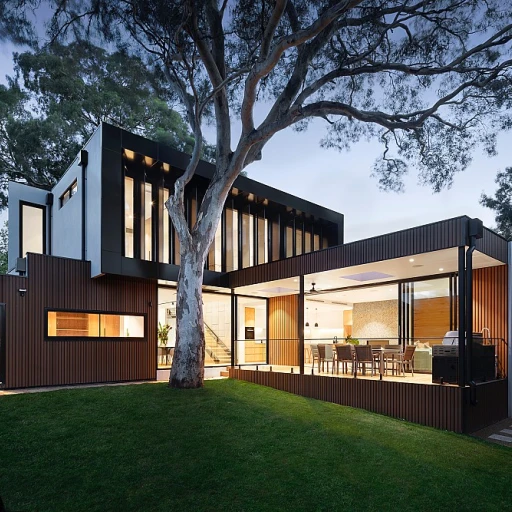
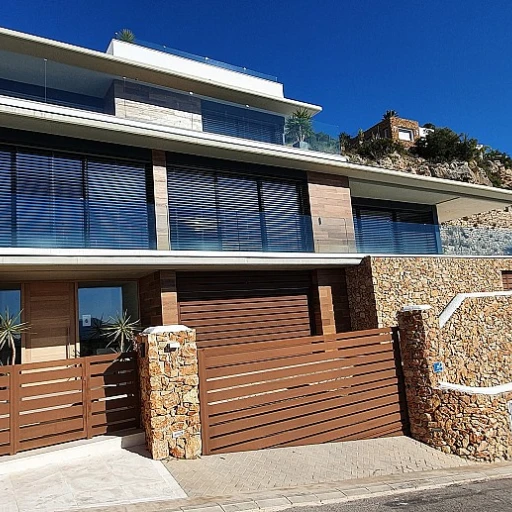
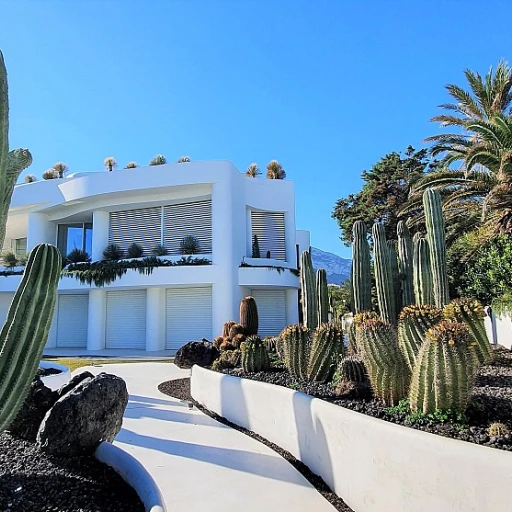
-large-teaser.webp)
